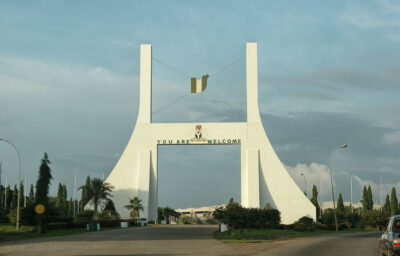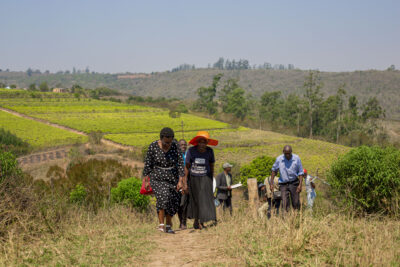In 1998, I earnestly, if naively, set out to increase public access to the particular body of knowledge for which I had some degree of responsibility. As a professor of education, I was a great advocate and beneficiary of, as well as minor contributor to, the realm of research and scholarship. It had begun to seem in that first decade of the World Wide Web as if we were missing out on the opportunity provided by the Internet. It was as if, in this curatorial sense, we had failed to notice that an enormous exhibition hall had just opened adjacent to where we were working in the closed storage areas that held our collection of learned works.
I was struck by the sense that something was amiss with the role of the researcher and scholar in the coming of the digital era. How is it that we taught the young with such enthusiasm about the value and wonder of both landmark and recent studies and then—with the appearance of this vast and relatively inexpensive public exhibition space (compared to print) in the 1990s—have relatively little interest in helping our graduates continue to enjoy the intellectual adventure and painstaking inquiry of this work?
In response, I utilized the fruits of a tiny endowment from the local newspapers to create what I called the Public Knowledge Project at the University of British Columbia, where I taught. As a project (rather than a center or institute), it was intended to do whatever it took to make our work as scholars public within a reasonable period of time. The Public Knowledge Project was meant, in that sense, to project a future, as one projects an image on a wall that will eventually become the mural that transforms that wall. In this case, the public state of research and scholarship was intended to be part of a larger picture of the Internet as an expansion of the public right to know.
For me, the Social Science Research Council’s workshop theme of Curating Knowledge under Digital Conditions emphasizes our potential role as both guardians and guides in the realm of research and scholarship. In the fourteenth century, curators tended to souls, while in the eighteenth, the name was applied to those who oversaw Oxford’s Bodleian Library (which Thomas Bodley had rebuilt a century earlier into the public library of the university). And if curators today typically prepare materials for public exhibition and public enlightenment, scholars follow a similar path of assembling and preparing learned works, passing them through an expert review process that improves and preps them to make a lasting contribution, with exhaustive cataloguing and careful preservation for perpetual use.
The open access movement, of which the Public Knowledge Project is an instance, extends that curatorial mission by seeking to move this body of work into the public exhibition hall. The principle here is that increasing the public presence and value of this knowledge—whether for the use of Wikipedia editors, physicians, public health staff, or the public generally, to give examples from our own research—strengthens this knowledge’s claim to the public resources necessary for its sustenance and survival.1John Willinsky, “Socrates Back on the Street: Wikipedia’s Citing of the Stanford Encyclopedia of Philosophy,” International Journal of Communication, 2 (2008); Laura Moorhead, C. Holzmeyer, L. Maggio, R. Steinberg, and J. Willinsky, “In an Age of Open Access to Research Policies: Physician and Public Health NGO Staff Research Use and Policy Awareness,” PLOS One, June 22, 2015; Lauren Maggio, R. M. Steinberg, L. Moorhead, B. O’Brien, and J. Willinsky, “Access of Primary and Secondary Literature by Health Personnel in an Academic Health Center: Implications for Open Access,” Journal of the Medical Library Association 101, no. 3 (2013), 205–212; Juan Pablo Alperin, The Public Impact of Latin America’s Approach to Open Access. Unpublished doctoral dissertation, Stanford University;
What the Public Knowledge Project has done to help move research into this public space is to develop open source (free) software publishing tools—Open Journal Systems (OJS) and Open Monograph Press (OMP)—for managing, reviewing, and posting research and scholarship online and in print. This software, first released in 2001, not only supports open access publishing by reducing publishing costs, but supports indexing and keeps exacting records, while allowing researchers to exercise their own curatorial oversight of the publishing process. The number of active journals (publishing ten items or more in 2015) using OJS has just squeezed past the 10,000 mark, with 60 percent publishing in the Global South, and close to a third in the social sciences (and only a small proportion not completely open access).2Brian Edgar, and John Willinsky, “A Survey of Scholarly Journals Using Open Journal Systems,” Scholarly and Research Communication 1, no. 2 (2010). OJS has also proven to be a vehicle of scholarly risk-taking and academic freedom by allowing small groups of scholars to build communities of interest and review around new avenues of work. This lowering of economic barriers to publishing can lead to abuses, certainly, but then that happens, as well, with the largest publishers.3John Bohannon, “Who’s Afraid of Peer Review?” Science 342.6154 (2013); Bob Grant, “Elsevier Published Six Fake Journals,” The Scientist, May 6, 2009; Charlotte J. Haug, “Peer-Review Fraud—Hacking the Scientific Publication Process,” New England Journal of Medicine 373.25 (2015): 2393–2395. The Public Knowledge Project was meant to project a future, as one projects an image on a wall that will eventually become the mural that transforms that wall.
While Open Monograph Press has not been taken up as widely as OJS, it is designed to enable university presses to reduce their overhead and investment in publishing titles with low expected sales, as it enables scholar and series editors to see the book through the publishing process. We have worked closely with the Smithsonian Institution to improve its abilities to handle edited volumes, and with Athabasca University Press to support an open access press financed by the sale of e-book and print-on-demand editions.
Over the life of this project, the appetite for open access in scholarly publishing has steadily grown from a passing interest to (a) open access policy initiatives among government and private research funding agencies mandating open access; (b) daily references in the news media that now typically link “a recent study” to the actual study; and (c) all of the major academic publishers offering both open access and hybrid journals. The proportion of open access journal articles has approached the halfway point, if through an ungainly mix of OA journals, final drafts, and rogue copies. But still, the majority of articles are published in subscription journals.
To help remedy this situation, we are working with libraries and journals on developing economic models for publishing cooperatives, based on the assumption that publishing open access journals need not cost any more than subscription journals. This approach builds on a history of scholarship in which learning has formed a commons through libraries and other means reaching back a millennium or two.4John Willinsky, The Intellectual Properties of Learning: A History from Saint Jerome to John Locke (Chicago: University of Chicago Press, in press). With the coming of the digital era, cooperative arrangements between libraries and publishers have had a resurgence. Consider the 3,000 libraries across 40 countries that are working through SCOAP3 to enable ten particle physics journals to publish on an open access basis; the 300 libraries that are working with Knowledge Unlatched to sponsor the open access publication of 78 books; the 100 libraries in the US Library Publishing Coalition that are hosting over 400 open access journals.
Our economic model starts with an initial transition period, in moving journals from subscription to open access, that is revenue-neutral for the publishers and expense-neutral for the libraries. We call it a “subscription-equivalent transition” (SET) in which publishers, libraries, and funders initiate the open access publishing cooperative based on a reallocation of subscription fees, while working on a longer-term financial plan and governance structure. It begins with existing financial structures, whether for big or small, profit or nonprofit publishers, subscription or open access journals, while directing this cooperative spirit toward raising the publishing quality for all of its members.
We are in the process of lining up a number of pilot studies for open access publishing cooperatives, and for which we are about to solicit library support involving (a) an international collection of anthropology and related social science journals operating under the name Libraria; (b) a Canadian collection of social sciences and humanities journals working with Erudit; and (c) among the journals and research libraries of Ghana. We have also begun a similar financial modeling with a mix of subscription and APC-based biomedical journals to see whether the funding agencies would not do better funding the journals directly rather than through APCs or grants to researchers.
If we have yet to establish the viability of the SET open access publishing co-op, as a means of flipping subscription journals to open access, we are creating exhibits, including case studies with business plans, co-op principles and action plans. This is what curators do in their efforts to help others see things in new, illuminating, and useful ways. They are also always on the lookout for important additions to their exhibitions. In that regard, I would turn to you to consider whether, among the research libraries, scholarly societies, editorial boards, presses and journals for which you have curatorial interests, there might be opportunities for exploring this cooperative path to increasing the public standing of our work.














